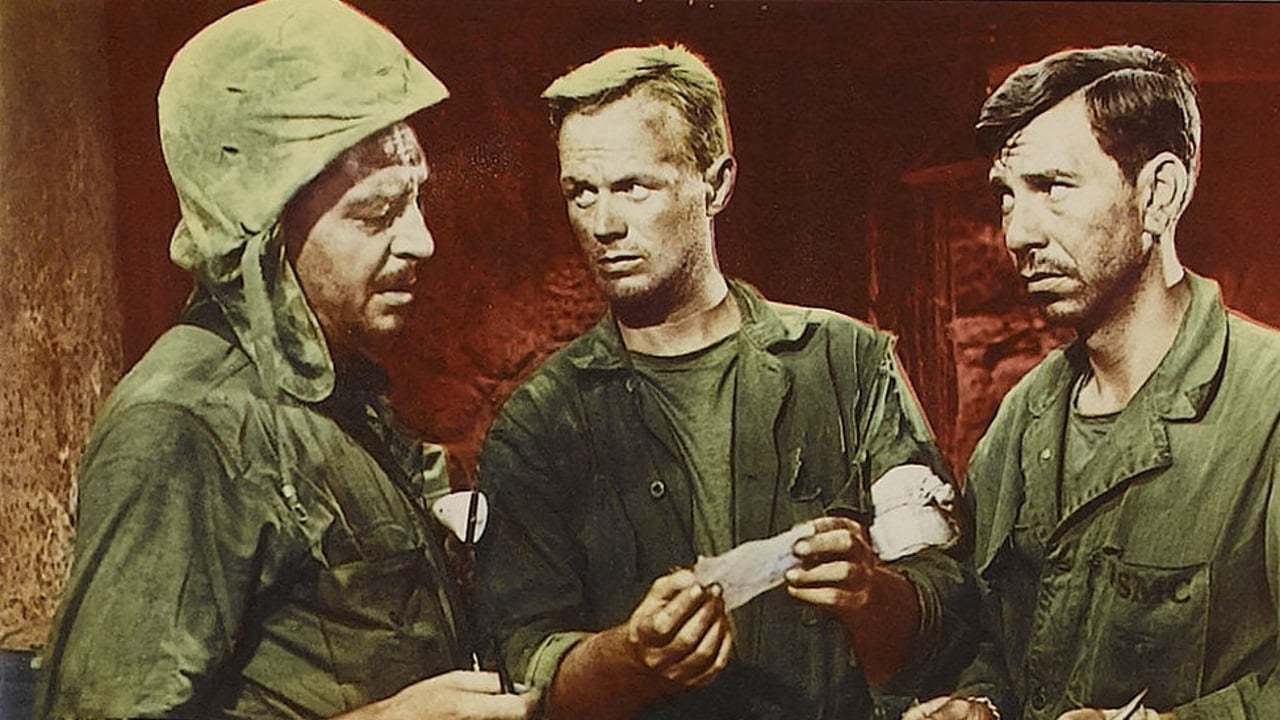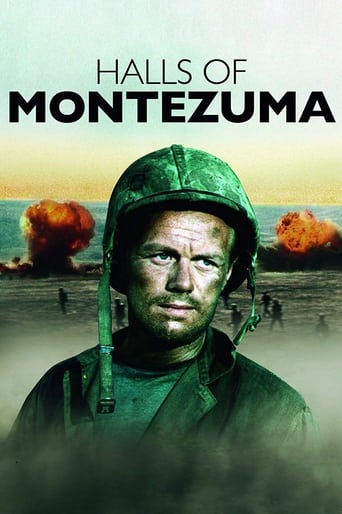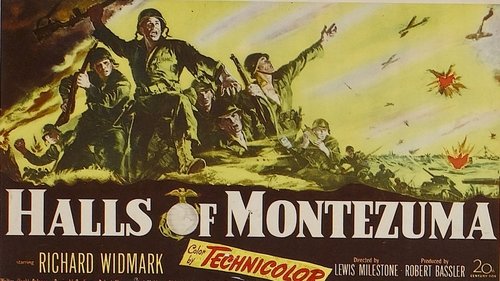


..."God is on our side..."Is this what kept most of Our Soldiers Soldiering On? According to Hollywood it is and for the Most Part Probably True. As Post War Movies go, some were starting to Consider the Psychological Ramifications of the Experience. This one has its Share of the in Battle Behavior (and motivation) of the Men and the Interaction among the Squad. But, the Pain and Suffering is somewhat like Pretentious Playacting and to move the Characters from one Horror to another. This precedes until the End where it is presented as Necessary for Victory.The Color Photography is Unimpressive and Static as are the Battle Scenes and We are left with a Film that seems like an After the Fact, Matter of Fact, Justification.
... View MoreI don't know exactly why this film gets as much applause as it does from reviewers. It's not bad, it's just unexceptional, even for 1950.A DUKW delivers a platoon of Marines to an unnamed Pacific Island. As the ungainly craft drones slowly shoreward we get to know a little -- a very little -- about a handful of the men. Sometimes there is a voice-over to help us out. ("What am I doing here? I should be back on my farm. Cows don't cause trouble.") Sometimes there's a visual flashback to spell out the more complicated backgrounds, but the flashbacks don't last long, and they don't tell us much.Nobody has more than one dimension. For instance, Jack Palance and Skip ("Prettyboy") Homeier are good friends. (Maybe what we used to call "******* buddies".) Homeier is going to be boxer Palance's manager after the war. Homeier comes from a crummy background and wants to be a big man, someday. And that's that, except that one dies trying to save the other.Slattery is a beefy unthinking slob who wants nothing more than to build a still and make whiskey. He eyes a discarded samurai sword and mutters, "That'd be worth a pretty drop." And that's it for Slattery.Another guy used to stutter but, with Lt. Richard Widmark's help, he overcomes it along with his fear of combat. So much for him.Every man carries some sort of demon with him going ashore, and he either overcomes it or dies trying. Of the half dozen or so men we get to know something about, one by one half of them are picked off so the remainder can grieve in their varying ways. The personal stories seem patched together by a platoon of orthodox screenwriters.The engine that moves the plot is that the Marine's advance has been stalled by an unexpected hail of rockets. Nobody can figure out where they're coming from. The Navy plasters the forward slopes of the ridge ahead. No dice. They plaster the reverse slopes. No good either. They plaster a nearby sugar cane field. Everything is plastered, except Slattery."Do you not remember," philosophizes an English-speaking Japanese prisoner, "that we Japanese always take the obvious and do the reverse." Light bulbs go off and an epiphany occurs. It means that the Japanese have actually built tunnels inside the ridge and placed the openings for the rocket-firing apparatus in the forward slopes of the ridge ahead.Actually, I kind of enjoyed it. It's ridden with clichés and the script really isn't innovative but there's plenty of action, and Lewis Milestone has directed with his usual aplomb. He uses several long pans of men charging and falling, which dates back to his "A Walk in the Sun," and before that to "All Quiet on the Western Front." The performances don't hurt either. Richard Widmark, as the officer who suffers migraines and is dependent on analgesics, isn't bad. Sometimes, when the scene calls for it, he can look positively pained. Jack Palance doesn't have much of a part as the would-be boxer but it's hard to ignore him when he's on screen. Richard Boone, at that age, before wasted by booze, looked more like Scott Glenn than I'd ever noticed before, at least from certain angles.
... View MoreThis is one of a slew of WW2 films made in the late 40's and early 50's, some better than others. This is definitely one of the better ones. This film features a whole bunch of future stars, such as Richard Widmark, Karl Malden, Richard Boone, Jack Palance, Robert Wagner, Jack Webb and Martin Milner. Most of them hadn't completely honed their skills yet and a couple of the performances are either a bit wooden (Malden, Wagner and Webb) or overdone (Widmark). The technology is very primitive by today's standards, yet this film holds up well. The acting aside, it seems that every effort was made to make the film as realistic as it could be. In that respect, this film is much better than some of the others of the same era. There are a lot of films from this era. If you choose to watch only a few of them, make sure this is one of the few.
... View MoreOne of the rare american war movies with a certain sense ofreality: Richard Widmark as a platoon leader conquering thepacific island of okinawa. From the long waiting time before theattack on the battleship, to the landing operation on the shores ofokinawa, to the painful losses of his men, we follow these seriouslooking americans. Their faces seem motionless and two of theofficers, including Widmark, have psychosomatic war syndroms.The killing is no fun in this movie, the dying is no fun to watch. All inall, not very entertaining, but a lesson in war, much more realisticthan later US-movies on the same topic.
... View More